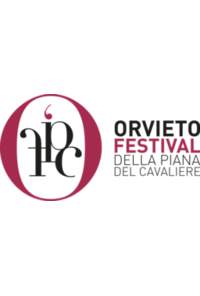Guido Barbieri
text and narrating voice
Margherita Cappelletto
“The voice of Time”
Silvia Paparelli
piano
Federico Martusciello
live electronics
Who invented time? Who started measuring it? And who taught us to give it a meaning, a direction, an end? According to Giorgio de Santillana, one of the 20th century’s greatest historians of science, Hamlet is entirely to blame. Not Shakespeare’s mad and melancholic hero, to tell the truth, but his much more ancient progenitor, Amleth, the ‘true’ prince of Denmark recounted in the middle ages by Saxo Grammaticus. From his Gesta Danorum we learn that Amleth owns a mill, a prodigious mill that grinds flour day and night, ensuring food and prosperity for all the subjects of the kingdom. But when the prince’s uncle, Fengi, kills his father, Orvedil, the land of Denmark falls into chaos and the enchanted mill begins to grind only sand. It is the prelude to catastrophe: the country plunges into a dramatic famine, while at court only the winds of revenge blow. The mill, the symbol of all misfortune, is thrown into the sea, but its blades continue to whirl and create a gigantic whirlpool, the Maelström whirlpool, the nightmare of all sailors venturing into the northern seas.
As de Santillana argues in his study, Hamlet’s Mill, the parable of the prince of Denmark narrated by Saxo is not a simple literary myth, but one of the oldest and most refined representations of the structure of time, present, in different forms, in all the cultures of the world, from East to West. The mill wheel is none other than the disc of the sun, the symbol of life and prosperity, observed, since time immemorial, in its incessant circular motion. And the catastrophe that strikes the kingdom of Amleth is the representation of one of the astronomical anomalies that ancient science has always recorded with precision: the so-called precession of the equinoxes. This is the phenomenon according to which the equinox, the arc of time in which night and day have exactly the same duration, does not always fall at exactly the same time of year, but rather slightly earlier each time, following a very long astronomical cycle (the so-called Platonic year) that lasts about twenty-five thousand years. This is a consequence of the inclination of the earth’s axis, which is, in turn, the cause, as is well-known, of the changing of the seasons. Ancient thought has always identified this anomaly, this irregularity in the circular flow of time, as the cause of the catastrophes that have always struck planet Earth: earthquakes, floods, famines, and wars. A wedge is driven into the mill wheel, in short, an imperfect cog in the circular machine of the sun.
The ambition of BHB – Hamlet’s descent into the Maelström is to recount the phenomenon of the birth of time and its innumerable crises, aporias, and anomalies through the concentric and simultaneous instruments of musical storytelling, mythical narration, and scientific demonstration. The performance is built around three concentric circles, one inscribed inside the other. The innermost circle, the solid and incandescent core, consists of the musical plot designed by Roberta Vacca and performed by Silvia Paparelli. At the “center of the center” are three monuments of western keyboard literature, Johann Sebastian Bach’s Symphony No. 7 for three voices, the Sarabande from the Suite in D minor No. 4 by Georg Frederich Händel, and the first movement of Ludwig van Beethoven’s Sonata Op. 27 No. 2, on which the composer, like the sun’s turn on the ever-changing ecliptic surface, engraves her writing, changing the vision, the acoustic image, the sound perception. And on which the electronic auras of Federico Martusciello also rest, in a sort of return to the square. The outermost circle is occupied by the narration, entrusted to the voice of Guido Barbieri, of the myth of Hamlet, his mill, the invention of time, and its cyclical crisis. The last ring, the outermost, but perhaps, in reality, the central one, is the presence of a historian of science, who, at crucial junctures in the story, illustrates and clarifies, from a live perspective, the scientific foundations of the astronomical phenomena that determine our conception of time.
The modern version of Hamlet’s myth, the one we have adopted, however, contains a further anomaly. Devoured by the will for revenge, powerless to observe the whirlpool of the Maelström generated by his sunken mill, Amleth’s plunges, like the protagonist of Edgar Alan Poe’s tale inspired by the same myth, into the depths of the sea. And he seems destined to perish along with his perfect machine. He will be saved, thanks to the acuity of his scientific observation, but after his descent into the Maelström, the world and his time will no longer be the same as before. Amleth will forever lose the innocence of the time, his faith in its irregular and continuous motion, and will be gripped by anguish at the unpredictable anomalies that accompany his path. The same anguish that, at the end of the day, is that of the time in which we live.
Guido Barbieri
